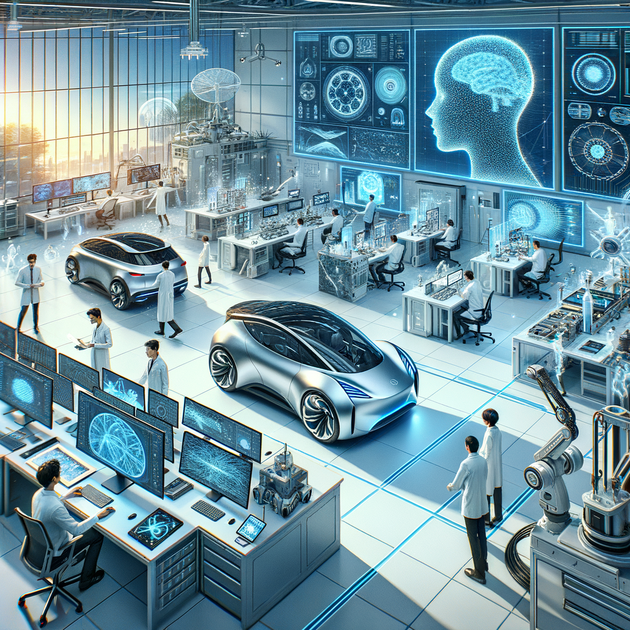How AI-Powered Design is Revolutionizing Electric Vehicles
The automotive world is entering a transformative era, thanks to the potent integration of artificial intelligence (AI) in vehicle design. Companies like GAC are pioneering this change by leveraging AI to enhance the aerodynamic performance and overall efficiency of electric vehicles (EVs).
The Genesis of AI in Car Design
Imagine this scenario: a team of engineers huddled around a computer screen, watching in real time as AI algorithms tweak and adjust the curves of a car’s body to reduce drag and optimize performance. This isn’t a distant future but happening now, driving revolutionary advancements in the automotive industry.
Real-World Example: GAC, a leading global automaker, has incorporated AI into its vehicle design process. By using AI, they have significantly enhanced the aerodynamic properties of their newest electric models, leading to improved range and overall performance.
How AI Enhances Aerodynamic Performance
Aerodynamics plays a crucial role in the efficiency of electric vehicles. Reduced drag translates directly into extended range, which is a critical factor for EVs. Here’s how AI contributes:
Data-Driven Design
AI algorithms analyze vast amounts of aerodynamic data faster and more accurately than human designers. These algorithms predict how different shapes will affect airflow and energy consumption.
Rapid Prototyping
With AI, designers can rapidly iterate various prototypes, testing and refining designs in a fraction of the time it would traditionally take. This dynamic process enables more innovative and efficient designs.
Optimization and Simulation
AI optimizes every aspect of a vehicle’s design through simulations. By simulating real-world conditions, AI ensures that every curve and angle of the car’s bodywork is engineered for peak performance.

Case Study: GAC’s Breakthroughs
GAC’s commitment to AI-powered design has led to several groundbreaking achievements. By integrating machine learning and deep learning techniques, they have achieved the following:
- Enhanced Range: Through aerodynamic optimization, GAC has managed to improve the range of their EVs by up to 10%.
- Increased Efficiency: AI-driven design has reduced manufacturing costs by streamlining the design process and minimizing material waste.
- Innovative Features: GAC’s vehicles now boast features that were impossible without the insights provided by AI, from adaptive aerodynamics to smart energy management systems.
The Bigger Picture: AI in the Automotive Industry
Beyond GAC, the entire automotive industry is witnessing a paradigm shift due to AI. Here are some broader impacts:
Safety Improvements
AI enhances vehicle safety features, from advanced driver assistance systems (ADAS) to predictive maintenance algorithms that prevent failures before they occur.
Customization and Personalization
AI enables manufacturers to offer customized vehicle designs tailored to individual driver needs and preferences, enhancing customer satisfaction and loyalty.
Sustainability
With AI optimizing every aspect of vehicle design and production, the industry becomes more sustainable by reducing emissions, cutting down on waste, and promoting energy efficiency.
The Road Ahead: Future Trends
The journey of AI in car design is just beginning. Here are some future trends to watch for:
Generative Design Algorithms
Generative design, powered by AI, takes vehicle aesthetics and functionality to new heights by creating designs that are both visually stunning and highly efficient.
Integration with IoT
Integrating AI with the Internet of Things (IoT) will allow vehicles to communicate with their environment, leading to smarter, more connected transportation systems.
AI and Autonomous Driving
AI is the backbone of autonomous driving technology, pushing the boundaries of what is possible with self-driving cars and making roads safer for everyone.
Consider this: How will AI continue to shape the future of transportation? From design to functionality, artificial intelligence is set to drive innovations we can only begin to imagine.
engage with the Conversation
How do you see AI transforming the vehicles we drive? What features or changes are you most excited about? Share your thoughts in the comments below and join the conversation on the future of AI-powered automotive design.
